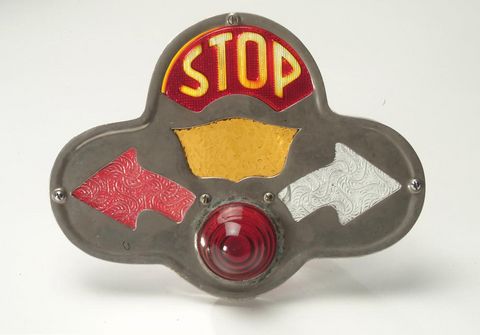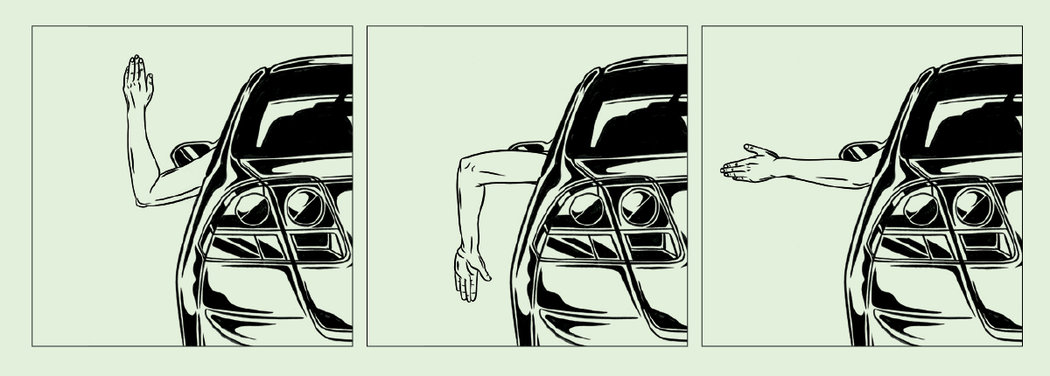Although early automobiles had the means to indicate which way the driver intended to go, turn signals in cars didn’t become common until the 1950s. That was more than ten years after someone invented the first electrical turn signal.
Before that, letting everyone know which was one planned to turn was all about the turn signals we all learned in driver education classes.
The invention of the modern turn signal may not have guaranteed drivers would indicate their intentions 100 percent of the time, but it gave drivers a fighting chance at predicting the future. That way we could all drive faster, taking more chances.
Hand Signals
Those three signals they taught everyone in driver’s education, the straight arm to indicate left, bent down at the elbow to indicate stopping, and bent up to indicate right, still matter.
Educators teach them because they offer a failsafe for a broken electrical system. They also offer drivers of antique cars there means to communicate. There’s only one problem with hanging one’s arm out the window. It’s not always sunny. Sometimes it’s too sunny. Also, scary.
Trafficators
Before cars everywhere, we had railways. By the 20th century, trains had been using a system of semaphoric indicators for years. Semaphoric means they used a system of flags, arms or lights to communicate directions.
Trainmen of the Royal Bavarian Railway used a larger version of the trafficator way back in 1890. Introduced in the early 1900s in Europe, trafficators for cars didn’t last in the long run, but for a minute they seemed like the future.
Powered by electromagnets, they would swing up from the door pillar to indicate intended direction. If both raised, it meant the driver intended to stop.
Once raised, a light would illuminate at the end of the arm to make it visible.
If one lived in the U.S., she would need to have them custom installed. They only came standard on German cars, but there were companies in the U.S. who would install them.
As electronics improved, controls for trafficators migrated to the foot pedals, but that would all end by 1939.
Turn Signals

Simler’s Handmade Signal | secondchancegarage.com
Percy Douglas-Hamilton submitted the first turn signal patent in 1907, which the patent office made official in 1909. His patent never made it on any automobiles, not that we know of.
Other versions, the patent created by Edgar A Waltz, Jr, who couldn’t sell his idea to auto manufacturers. Also, as featured in the Smithsonian, a custom indicator by Oscar J. Simler made for a brilliant system, but that idea also didn’t make it into cars.
It took the Buick automotive company to bring the first electric turn signal to market in the 1939 models. The first versions only worked on the back of the car, but the next year they put them up front too.
That was when everyone else raced to catch up, companies like Cadillac, LaSalle, Hudson, and smaller brands offering signals as optional amenities.
Still, the idea remained a non-standard through the ‘40s. By the end of World War II, turn signal controls migrated to the left of the steering column. But, it wasn’t until the 50s that most cars had turn signals as such.
Most of today’s drivers, faced with turn signals that don’t work, would likely drive until they reached home or the cops pulled them over. Even if we know how to make those weird arm signals, we’re not sticking our arms out the window. Besides, we’re too busy taking selfies with that hand.
Sources: secondchancegarage.com, nytimes.com



